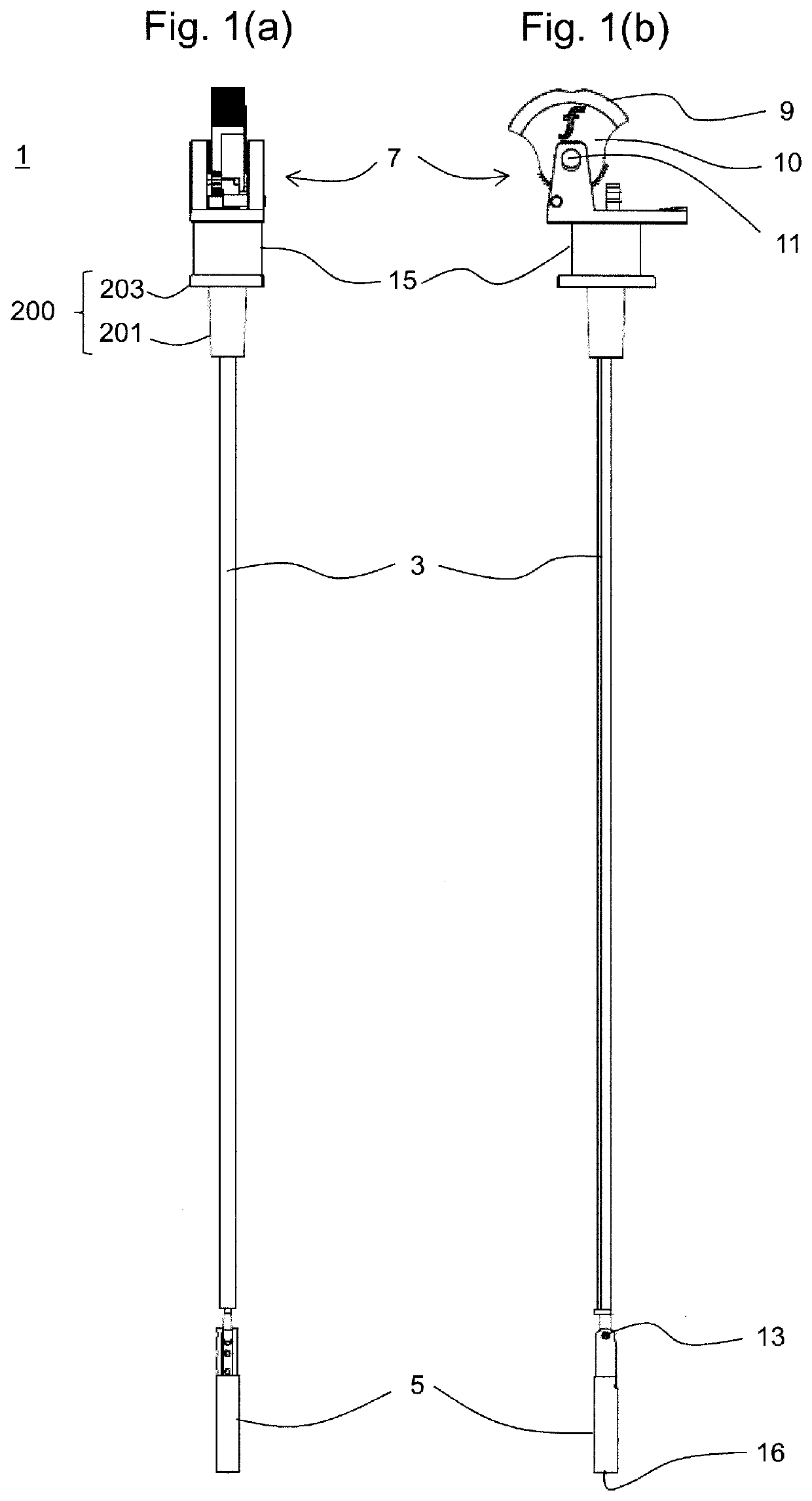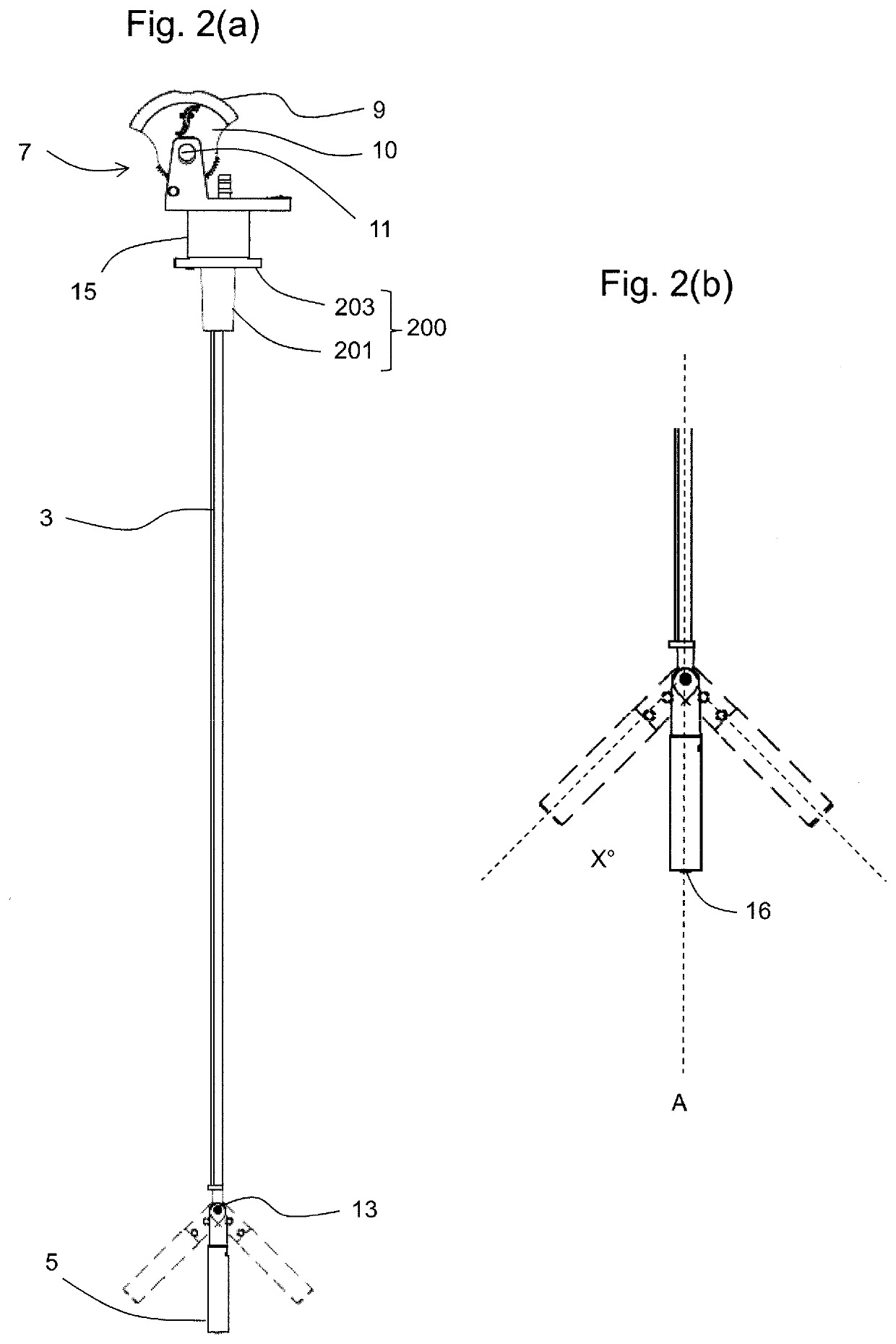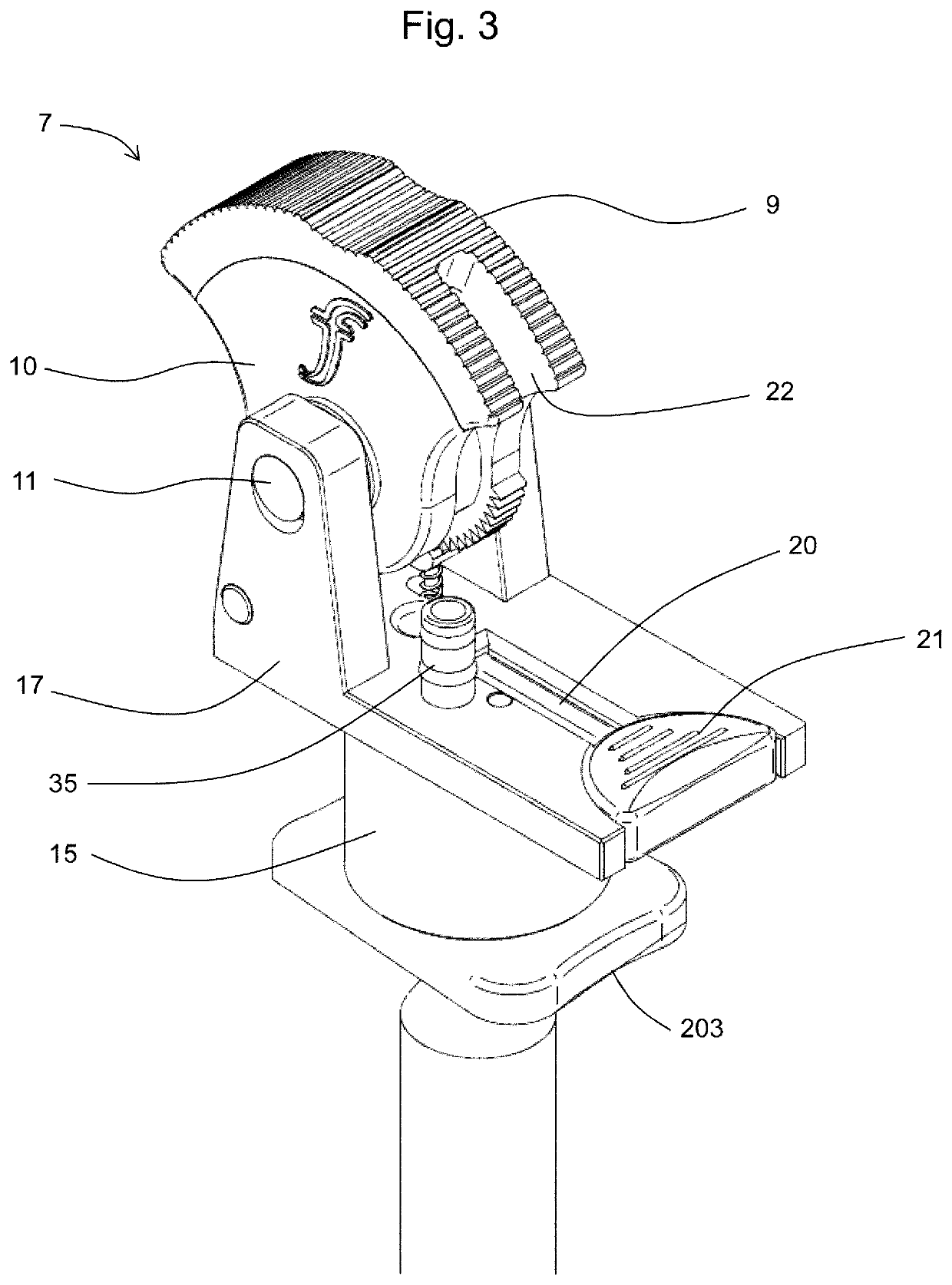Intubation Devices
a technology of intubation device and et tube, which is applied in the field of intubation device, can solve the problems of inability to use as sole techniques to correctly determine the placement of et tube, inability to always be possible, and difficulty, and achieve the effect of accurate visualisation and placemen
- Summary
- Abstract
- Description
- Claims
- Application Information
AI Technical Summary
Benefits of technology
Problems solved by technology
Method used
Image
Examples
first embodiment
[0054]FIGS. 7 (a-c) show an ET tube 100. The ET tube has a body 101 which comprises a flexible hollow tube. The ET tube body may typically be made from e.g. PVC, although the skilled person will be aware of a range of other suitable materials. The distal end of the tube is inserted into a patient's trachea during intubation. The proximal end of the ET tube may be removably attached to an ET tube connector for connection to a ventilation system, although this is not shown in these drawings. The ET tube has a bending portion 103 located towards the distal end 102 of the body, intermediate the body and the distal tip portion 104 of the tube. The bending portion is here formed as a concertina portion of the tube to promote preferential bending at that position. The concertina allows for increased bending of the bending portion in comparison to the general flexibility of the body of the ET tube, as demonstrated in FIG. 7 (c). The length of the concertina portion is not particularly limit...
second embodiment
[0057]FIG. 8 shows a schematic view of an ET tube. In this embodiment, the bending portion 103 is a portion of the tube made from a different material to the material of the body 101 of the tube. Here, the body of the tube is made from a first type of PVC, and the bending portion is made from a second, softer PVC, although it may also be possible to use e.g. silicone. The body and the bending portion are connected together using a seal (shown as a dashed rectangle) which extends across the join between these portions. The material chosen for the bending portion should typically be more flexible than the material of the body of the ET tube, to allow increased ease of bending the bending portion compared to the body of the ET tube. In this embodiment, the bending portion 103 includes the distal tip portion 104 of the ET tube.
[0058]In this particular embodiment, an inflatable cuff 107 is also shown. Such a cuff is a standard feature of many well-known ET tube designs, and as such, the ...
PUM
 Login to View More
Login to View More Abstract
Description
Claims
Application Information
 Login to View More
Login to View More - R&D
- Intellectual Property
- Life Sciences
- Materials
- Tech Scout
- Unparalleled Data Quality
- Higher Quality Content
- 60% Fewer Hallucinations
Browse by: Latest US Patents, China's latest patents, Technical Efficacy Thesaurus, Application Domain, Technology Topic, Popular Technical Reports.
© 2025 PatSnap. All rights reserved.Legal|Privacy policy|Modern Slavery Act Transparency Statement|Sitemap|About US| Contact US: help@patsnap.com



